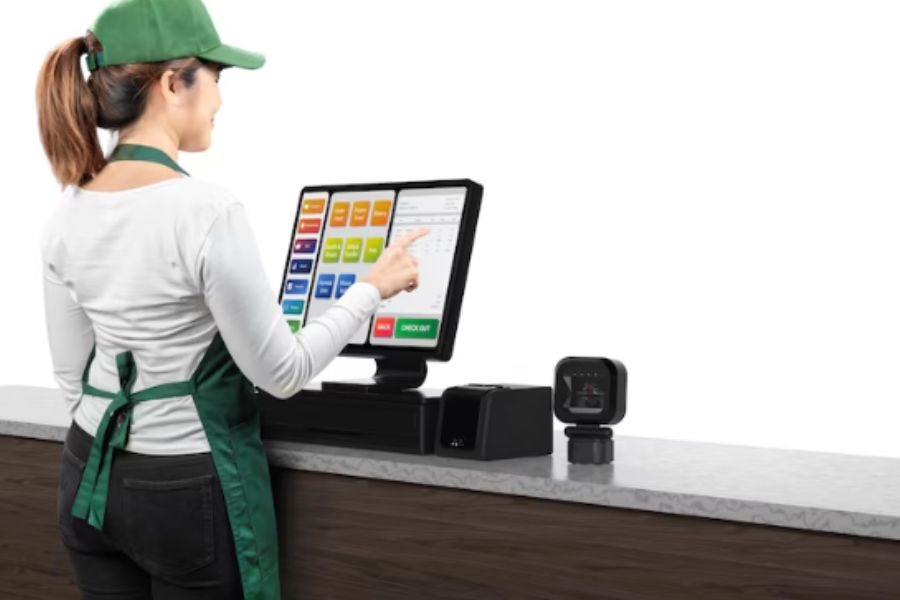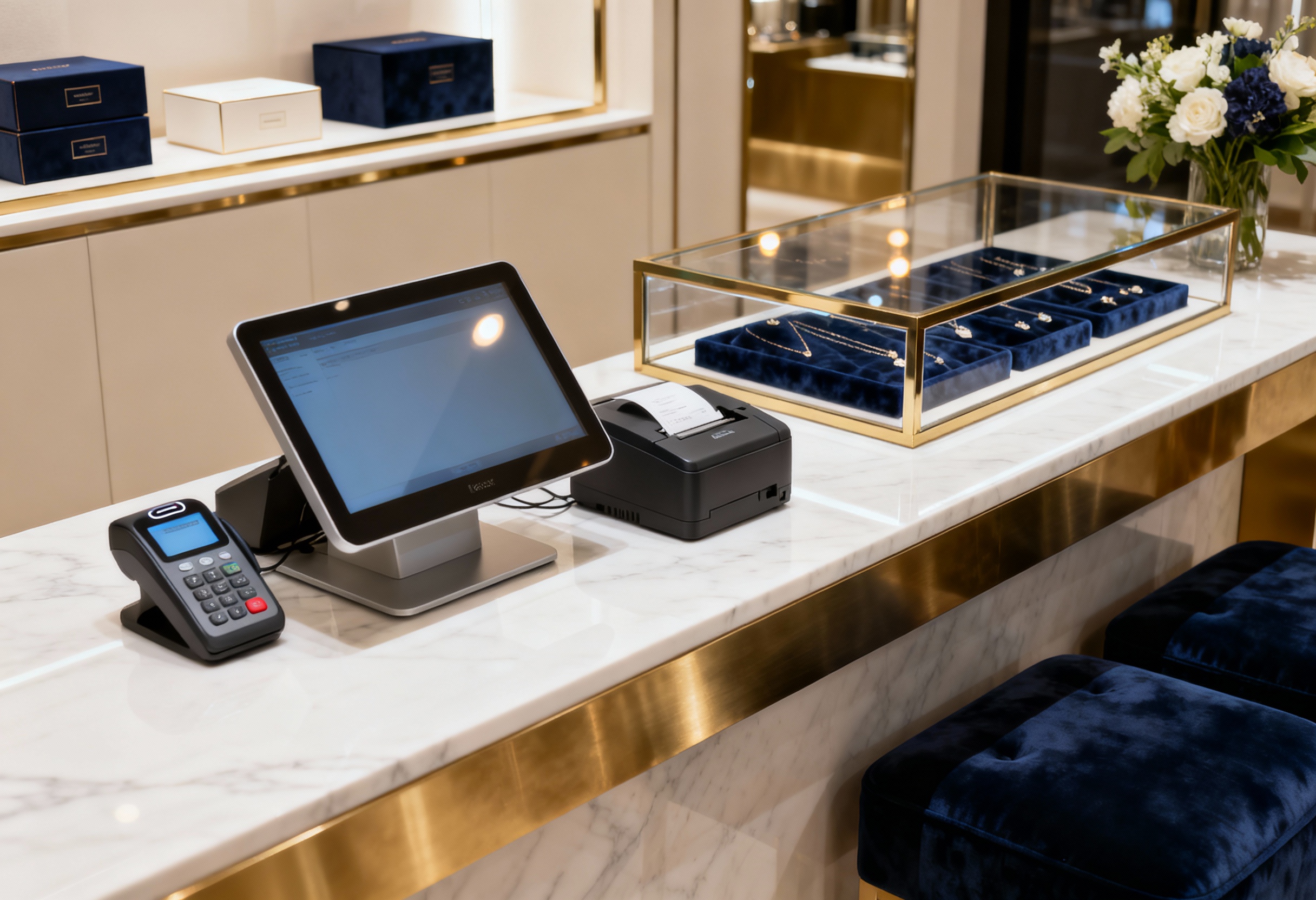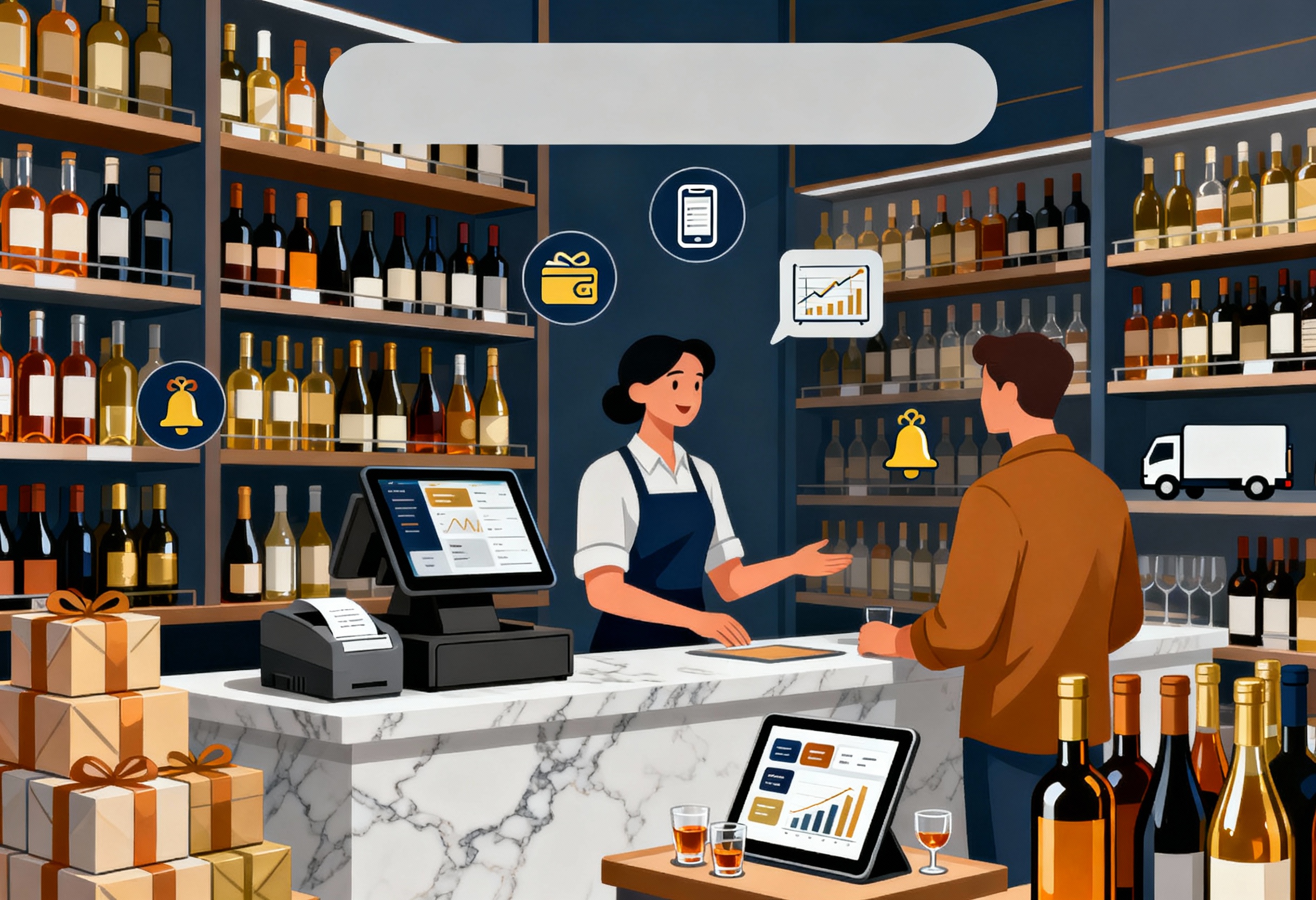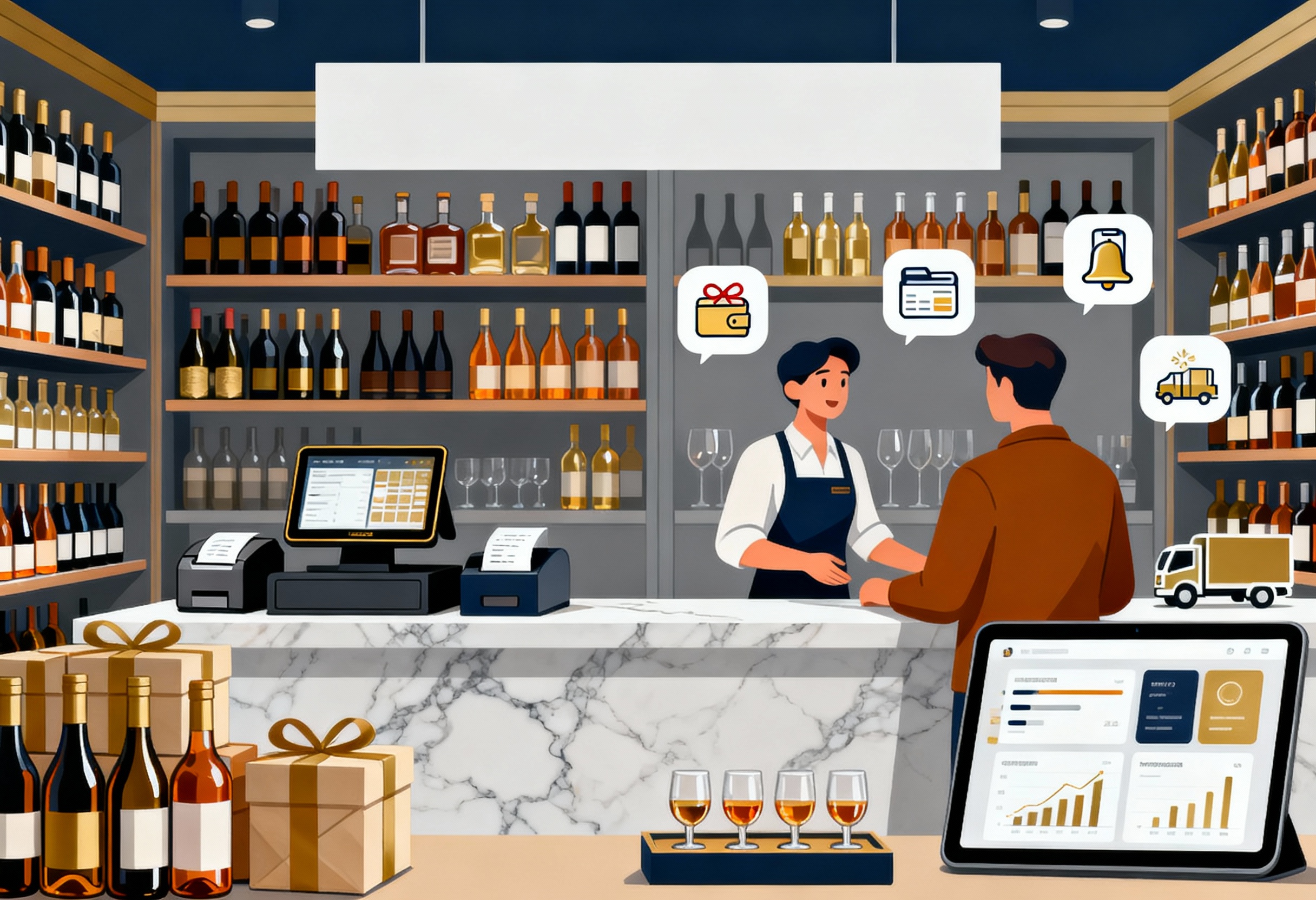Managing multiple retail locations is no easy task, especially when you’re dealing with disconnected systems that create more problems than they solve. These inefficiencies can slow down operations and eat into your bottom line. That’s why selecting the right multi-store POS system is crucial to optimizing your processes and driving profitability. In this guide, we’ve carefully selected and compared five top multi-store POS systems for 2025. Let’s dive in and discover the comparison multi store POS systems on how these innovative POS solutions can elevate your retail operations.
Highlights:
- As retailers shift toward expansion and localized strategies in 2025, multi-store operations are gaining traction as a scalable model to boost in-store impact and customer reach.
- A strong multi-store POS simplifies complex operations by centralizing inventory, tracking sales by location, managing staff, and consolidating financial reports.
- This comparison breaks down the top 5 POS systems based on core strengths: inventory, customer management, integrations, usability, and pricing.
Market context and trends in 2025 for multi store businesses
Retailers are looking ahead with growth in mind. Recent findings show that half have plans to expand by opening new locations within the next two years. Many of them, around 68%, see better in-store experiences as a key driver for attracting foot traffic to these new branches.
Physical stores continue to play a strong role in driving sales, especially when it comes to impulse buying. Data from a November 2023 survey reveals that nearly 32% of shoppers made a purchase immediately after discovering a product in-store.

By 2025, running several store locations has become a key strategy for businesses aiming to scale. Companies are breaking down larger markets into smaller, manageable segments. This allows them to tailor product offerings and customer experiences without being restricted by a single operation.
Retailers now look beyond traditional models, focusing on adaptability across their networks. The ability to test new ideas, respond to local demand, and make data-driven decisions from one central location has become more critical as stores are no longer isolated.
Moving forward, companies need to invest in technologies that connect all store locations while allowing local managers to make decisions based on their market knowledge. This balance between central oversight and local control will shape future success for multi-store operations.
How a multi-store POS system improves the management of multiple retail locations
A multi-store POS system assists businesses in managing several retail locations with a unified and integrated approach. By consolidating data from all stores into a central platform, businesses gain improved control over inventory, sales, and operations across various locations.
- Centralized Inventory Management: Inventory management becomes more organized when a multi-store POS system is implemented. All locations are connected to a single system, making it easier to monitor stock levels and guarantee that popular items are replenished as needed. This integration prevents stockouts and overstocking, leading to better resource management and fewer lost sales due to inventory discrepancies.
- Sales Performance Monitoring: Sales reporting is also improved with a multi-store POS system. It consolidates data from all locations into a central dashboard, giving managers a clear view of sales trends across the business. This unified approach allows businesses to analyze sales patterns, identify top-performing products, and make informed decisions on inventory purchasing and staffing.
- Employee Management and Scheduling: Labor management benefits from a multi-store POS system as well. Staff schedules, timecards, and performance data can be monitored from one platform. This reduces the complexity of managing employees at several locations, helping to optimize labor costs and guarantee adequate staffing during peak hours. The result is more coordinated operations across the board.
- Financial Reporting Across Locations: Financial visibility improves with real-time reporting from all stores. Retailers can access up-to-date profit and loss statements, tax data, and sales figures from one interface. This centralized financial oversight simplifies budgeting, auditing, and decision-making, making it easier to spot trends or identify potential financial concerns.
For businesses exploring the best tools to support this shift, a comparison multi store POS systems guide can highlight which platforms help connect store networks, align inventory in real time, and give both headquarters and individual locations the flexibility they need. Moving forward, companies that balance central oversight with local decision-making are more likely to thrive across varied retail environments.
Comparison multi store POS systems – Top 5 leading names in 2025
ConnectPOS
In comparison multi store POS systems, ConnectPOS is a retail management system tailored for businesses operating more than one location. It is built on MACH architecture, allowing retailers to modify or expand their operations without disruption. The platform focuses on helping teams coordinate more closely, maintain consistency across stores, and provide a familiar shopping experience for customers both online and in person.
Retailers can run daily operations while keeping every store connected under one cloud system. This multi-store POS supports everything from inventory tracking to staff management and customer interactions. ConnectPOS brings the physical and digital sides of retail closer together through synchronized workflows and unified data.
►►► Optimal solution set for businesses: Multi store POS, Next-gen POS, Inventory Management Software (MSI), Self Service, Automation, Backorders
Key Features:
- Inventory and Order Oversight Across All Locations: Businesses using ConnectPOS have one shared view of inventory and orders. This setup helps prevent overselling and stock mismatches between stores and online platforms. Orders placed online or in-store update inventory in real time, improving accuracy.
- Automation for In-Store Processes: Discounts, checkout steps, and permissions can be customized for each store. Retailers can set up consistent routines for teams to follow, which helps remove unnecessary delays in everyday transactions.
- Support for Business Growth: When opening a new store, managers can copy settings from an existing location, cutting down the time needed to prepare systems and train staff. This consistency helps maintain the same shopping experience in every branch.
- Sales Across Channels: Orders can be made online and collected in-store, or purchased in one location and shipped from another. Stores can support each other when a product isn’t available locally.
- Connection with External Tools: The system links with popular software like CRMs, ERPs, and accounting platforms. This connection reduces time spent moving data manually and helps departments work from the same information.
- Local and Group-Wide Insights: Managers can view performance by store or across the entire chain. The platform tracks trends and purchasing behavior so that decisions are based on store-specific conditions.
- Customer Profile Access: Staff can view customers’ past purchases and loyalty points at any location. Personalized service becomes easier when teams are informed of a shopper’s preferences and history.
- Flexible Payment Methods: ConnectPOS accepts contactless payments, split payments, and various card types. This flexibility improves the checkout experience and keeps the line moving faster.
Pros:
- One system keeps store data consistent across locations
- Staff permissions and sales flows are tailored to store needs
- Helps manage inventory for online and offline channels together
- Provides insights to support local strategies
- Can connect with widely used business tools
Cons:
- New staff may need training to get comfortable with system tools
- Smaller stores with basic needs may not use the full range of options
- Premium tools and deeper integrations may lead to higher costs over time
Pricing
ConnectPOS is available through three pricing plans:
- Standard: Starting at $39/month, this plan includes core point-of-sale functions suitable for stores getting started.
- Advanced: Ideal for retail chains needing broader tools and reports.
- Premium: Best for larger setups where deeper integration and custom workflows are required.
Retailers can choose the plan that best matches their current needs and scale it up when expanding operations. Each plan supports a mix of retail essentials at a fraction of the cost of traditional systems.
Shopify POS
Shopify POS serves as a comprehensive POS solution for multi-store retailers with integrated eCommerce platforms. The system consolidates both online and offline operations into one unified platform, simplifying stock management and order processing across locations. It automatically syncs product data, ensuring accurate stock levels and consistent product details across all sales channels.
Key Features:
- Shopify integrates its POS with the online store platform, centralizing inventory management, sales tracking, and customer data, resulting in smoother operations.
- It supports a unified shopping experience, maintaining customer consistency regardless of their interaction point with the brand.
The system’s cloud-based infrastructure enables expansion by allowing businesses to add more stores or sales channels as needed.
Pros:
- Shopify connects with over 10,000 apps, including tools for e-commerce, social media platforms, and accounting, making it highly adaptable for various business needs.
- Retailers running pop-up shops or attending traveling shows find Shopify POS useful due to its straightforward setup, even in temporary or remote locations.
Cons:
- Some customers note that adding extra users can be pricey, with costs reaching up to $500 annually per person, which could strain budgets for businesses with large teams.
Pricing:
- Basic Plan: $39/month ($29 yearly) with online processing at 2.9% + 30¢ and in-person at 2.6% + 10¢.
Shopify Plan: $105/month ($79 yearly), processing rates at 2.7% + 30¢ online and 2.5% + 10¢ in-person. - Advanced Plan: $399/month ($299 yearly), processing rates at 2.5% + 30¢ online and 2.4% + 10¢ in-person.
- Plus Plan: $2,300/month with customized processing rates based on individual needs.
Lightspeed
Lightspeed stands out for multi-store apparel retailers with its tailored features designed for the fashion industry in the comparison multi store POS systems. It provides centralized tools for inventory management across locations, including size and color variations. Its integrated analytics help track sales trends, customer preferences, and fashion insights.
Key Features:
- A unified customer database across all locations enables targeted marketing and personalized recommendations.
- Automated reordering and simplified product transfers help maintain stock levels for every store.
- Cloud access allows remote control of store operations from any location.
Pros:
- Integrations: Lightspeed connects with various eCommerce platforms, including Shopify and specialized apparel management tools.
- Inventory Management: Track and transfer inventory between stores, ensuring optimal stock levels and minimizing stockouts.
Dedicated Support: A dedicated account manager provides personalized assistance to clients.
Cons:
- Third-Party Processing Fees: Using third-party payment processors incurs a monthly fee of up to $400.
Pricing:
- Lean Plan: $89/month ($69 yearly) includes 24/7 support and a dedicated account manager.
Standard Plan: $149/month ($119 yearly) adds eCommerce and accounting software integration.
Advanced Plan: $269/month ($199 yearly) provides loyalty programs and detailed reporting.
IT Retail
IT Retail POS suits grocery chains thanks to its specific tools for produce and weight-based items. Its cloud system supports real-time stock tracking across stores and provides a simple interface for monitoring sales and operations.
Key Features:
- Scale Integration: The system connects with digital scales for precise pricing of items sold by weight.
- Loyalty Program: Built-in tools support reward systems tailored to grocers.
- Centralized Inventory: Manage stock across locations through a single database.
Pros:
- Onboarding Support: Customer feedback on TrustPilot frequently mentions personalized guidance during setup. Many users recalled their support experience positively, often naming the technicians who assisted them.
- Online Sales Connection: The system connects with apps such as Mercato, letting shoppers browse and order from store inventory digitally. Staff can fulfill these orders using the same tools already in place.
Cons:
- Limited Customization: Some users mentioned the interface doesn’t allow much flexibility in terms of layout or visual branding.
- Processing Lock-In: All plans require using IT Retail’s payment services. Third-party processors are not supported.
Pricing:
- Flex Monthly – $69/month: Includes a basic setup with training and around-the-clock support. Comes with touchscreen PC, barcode scanner, receipt printer, cash drawer, and chip reader.
- Freedom Standard – $1,499 (hardware) + $99/month: Includes a wide-screen terminal, pin pad, customer-facing display, and cash drawer with a two-year warranty.
- Freedom Premium – $1,999 (hardware) + $99/month: Adds larger screens and upgraded displays to the Freedom Standard package.
KORONA POS
KORONA POS supports retailers managing several store locations by simplifying stock control and reporting across the entire network. It suits businesses looking to track inventory, move products between sites, and view data from a single place.
When conducting a comparison multi store POS systems analysis, KORONA POS is chosen for its ability to provide centralized insights while maintaining flexibility for individual store operations.
Key Features:
- Cloud-based inventory control keeps stock information updated across all outlets.
- Product transfers between shops are smooth and immediate.
- Syncing across sites maintains up-to-date records to prevent overstocking or empty shelves.
Pros
- Scalability and Tailored Setup: Businesses can easily add new locations, checkout lanes, or items. Settings can be adjusted to fit unique store needs, whether for a specialty shop or a quick-service model.
- Custom Reporting Tools: Retailers build their own reports to focus on sales trends, product performance, or operational gaps. This flexibility helps different industries track what matters most to them.
Remote Oversight: Store owners get live access to sales, inventory, and operations from anywhere. All they need is an internet connection to stay informed and in control.
Cons
- Limited Fit Across Industries: While a strong choice for liquor shops, attractions, and similar outlets, it doesn’t match the needs of apparel stores with complex sizing or sit-down restaurants.
- Steep Learning Curve: The depth of customization may slow down first-time users as they get familiar with the platform’s many settings.
Pricing
KORONA POS charges a fixed rate each month without hidden charges or contracts. Paying annually cuts the price by 10%.
- Core Plan – $59/month: Covers standard retail needs, allows unlimited user profiles, supports eCommerce, and includes a gift card program.
- Retail Plan – $69/month: Adds tools for building a customer database, connecting with suppliers, setting smart reorder rules, generating barcodes, and tracking product activity.
Comparison Table: 5 Multi-Store POS Systems at a Glance
To assist you in making a well-informed decision, we have created a table that highlights the key differences among five top-performing multi-store POS systems. This comparison covers essential features such as inventory control, reporting capabilities, hardware compatibility, integrations, and pricing models, providing you with a clear overview of what each platform offers.
| POS System | Best for | Inventory Management | Customer Management | Integrations | Ease of Use | Pricing (Starting At) |
| ConnectPOS | Retailers with multiple stores, hybrid online-offline operations | Unified across all channels, real-time updates | Unified profiles, loyalty points accessible anywhere | CRM, ERP, accounting systems | Customizable, may need training | $39/month (Standard plan) |
| Shopify POS | Brands combining eCommerce with physical stores | Synced with online store, central database | Online/offline customer data sync | 10,000+ apps including eCommerce and finance | Easy to deploy, suitable for events | $39/month (Basic plan) |
| Lightspeed | Apparel and fashion chains | Color/size variant tracking, reordering, transfers | Targeted campaigns, shared database | eCommerce tools, fashion platforms | Comprehensive but may require onboarding | $89/month (Lean plan) |
| IT Retail | Grocery chains needing weight-based tools | Central stock system with grocery tools | Rewards program for grocers | Online grocery apps like Mercato | Simple interface with strong support | $69/month (Flex Monthly) |
| KORONA POS | Retailers with remote control needs and flexible reporting | Cloud-based with stock transfers | Basic loyalty features, live access | eCommerce, supplier tools | Flexible setup, steep learning for new users | $59/month (Core Plan) |
FAQs – Comparison multi store POS systems:
Which POS system is the most affordable for a small chain just starting out?
ConnectPOS and Shopify’s basic plans begin at $39/month, making them good entry points for small operations testing multi-location management.
Do any of these POS systems support both online and in-store sales?
Yes, ConnectPOS, Shopify, and Lightspeed all sync in-store and online sales, helping retailers maintain unified product and order data.
Can these platforms handle inventory for stores in different cities or countries?
Yes. All five systems provide central access to inventory data across locations, and some allow easy product transfers between branches.
How does ConnectPOS stand out in the comparison multi store POS systems?
In the comparison of multi store POS systems, ConnectPOS stands out for its strong focus on real-time data, offline mode, compatibility with popular platforms like Shopify and Magento, and flexibility in handling various retail setups.
Conclusion
Running a business across different locations demands clear structure, real-time insight, and dependable tools. The systems we reviewed each bring their own style of problem – solving to the table-from handling stock across stores to helping staff work more confidently.
Each business has its own way of working, and no system fits all. But choosing one that matches your goals, team size, and store layout can create breathing room-space to grow, test ideas, and respond faster to changes in demand or foot traffic. Let this comparison multi store POS systems be a starting point, not a finish line. The right setup doesn’t just support your business – it changes how you work, from the ground up.
If you’re looking for a system that’s built with multi-location retailers in mind, take a closer look at ConnectPOS. Backed by a strong track record and practical tools, it could be the turning point for your operations. Reach out to us today and see how it fits your store network.
►►► Optimal solution set for businesses: Shopify POS, Magento POS, BigCommerce POS, WooCommerce POS, NetSuite POS, E-Commerce POS



